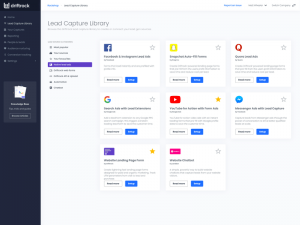A newspaper editor taught me several lessons that will help job seekers communicate better with hiring managers, human resource departments, and executive recruiters, a group I describe as screeners.
His advice is true for your résumé, cover letter, bio, LinkedIn profile, networking calls, and interviews.
Never Bury the Lead
The concept is to have the most relevant, important, and interesting information at the opening of the story you’re presenting. Think newspapers:
- Headline
- First sentence
The people between candidates and job offers will decide whether they believe you are worth considering in about six seconds. Therefore, if your job search tools don’t hook them immediately, the rest of your impressive history is squandered.
Use An Inverted Pyramid Structure
Similar to never burying the lead, write and talk using an inverted pyramid structure to quickly deliver your key sales points in case the screener doesn’t take the time to fully understand all of your achievements.
The inverted chronological résumé works well since screeners are particularly interested in what you’ve done recently. Most reviewers decide whether or not to move forward before reaching the second page of your résumé.
LinkedIn’s profiles are structured this way, leading with the functional title and following differentiation (augmenting your title, current and immediate past jobs, and summary).
To be clear, this does not suggest using a functional résumé.
Job Seekers Should Write for the Reader, Not Themselves
Reviewers want to be able to quickly screen job seekers in or out. They strongly refer the classic reverse chronological résumé and react badly to a functional approach…often simply tossing them without reading because functional résumés are perceived as an attempt to hide a candidate’s problems.
- Cut Clutter:
- Eliminate anything that doesn’t directly build your sales rationale.
- Reduce the number of bullets so the results you use standout as important.
- Eliminate superfluous adjectives.
- Never use litanies of self-stated compliments.
- LinkedIn has a yearly list of the most overused words and phrases to avoid.
- Eliminate anything that doesn’t directly build your sales rationale.
- Eliminate Jargon and Acronyms:
- The reviewer often knows very little about your function and employers and sometimes even the category.
- Make Everything Easy to Read:
- Good margins with 11-point type and corresponding line and paragraph spacing encourage scanning.
- Limited use of bold and underlining call attention to critical information.
- Good margins with 11-point type and corresponding line and paragraph spacing encourage scanning.
- No Gaps in Desired Information:
- Recruiters want every job and every date listed, including for education.
Use Facts
Provide substance with clearly understood facts and specific numbers.
Be Accurate
HR departments and executive recruiters fact check, kicking out otherwise highly qualified job seekers for little more than puffery. We’ve all read about executives who lost a great job, even after being hired, because errors and misstatements, not even outright lies, were discovered.
Be Active, Not Passive
Your search materials project an attitude that needs to be active and energetic, not passive. No matter the title, executives need to be perceived as leaders not administrators.
Know When to Stop
Well written articles leave readers wanting just a little more. Unfortunately, too often in résumés, cover letters, and especially interviews, candidates provide the information that kills the potential offer.
If you’d like more writing advice, I highly recommend Strunk and White: The Elements of Style. I continue to use the Fourth Edition of this great little book of about 100 pages that has practical advice for better communications including “omit needless words,” advice I need to follow better. Amazon’s review includes: “In 2011, Time magazine listed The Elements of Style as one of the 100 best and most influential books written in English since 1923.”
Business & Finance Articles on Business 2 Community(77)







